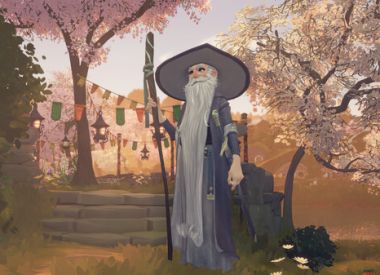After a string of classic-to-solid horror movies (House of the Devil, The Innkeepers, The Sacrament) director Ti West has turned to the western genre with his new film In A Valley of Violence. Unfortunately, the instincts that made him such a masterful subverter of horror conventions didn’t follow him into the desert.
In A Valley of Violence chokes on words. In nearly every scene every character lays out the entire movie for you all over again, talking and talking and talking and talking in long paragraphs. In place of atmosphere In A Valley of Violence has redundant plot exposition, tough guy preening and rambling descriptions of immediate feelings followed by how those feelings make the other guy feel. Limp variations on hardboiled “Then I’ll see you in hell!” applause lines are sprinkled throughout, sometimes three or four in a gush, like raisins in a muffin you already didn’t want to eat.
Characters have zero interiority, spilling their heart’s darkest secrets all over each other. But even this is unnecessary, since every character seems to understand the other characters intimately. When John Travolta’s Marshal first meets our drifter-come-to-town, Paul (Ethan Hawke), he lays out Paul’s entire backstory and motivation. It's supposed to make him look insightful, like Sherlock Holmes, but since every other character does the exact same thing it begins to feel like a screenwriting tic.
The plot of In A Valley of Violence is simplistic in a failed effort to be spare. Ethan Hawke arrives in the town of Denton, is confronted by the local asshole (in one of those stupid western scenes where our hero is antagonized from across the room for literally no reason), things escalate (hint: think of it as a John Wickstern), Hawke has to kill them all.
When it comes to menacing and capable opponents, it’s hard to imagine worse picks than James Ransone’s Gilly and his bumbling sidekicks (who giggle and yee-haw to a degree that’s never quite expansive or head-bonking enough to be funny—just tiring). Who saw The Wire Season 2 or Sinister and thought to themselves, “Boy, that weaselly guy would be a menacing villain”?
It’s not that Paul deserves better antagonists. As a strong but silent type who—yeah—talks endlessly (late in the movie he explains his motivations at length to a man whose throat he’s about to slit), Paul’s the worst of both worlds.
In conversations with chattier characters like local innkeeper Mary Anne (Taissa Farmiga) Hawke’s stoic silence forces his conversational opposite to do the work of characterizing him. Paul is hopelessly boring, but everyone in town finds him fascinating.
Meanwhile, Hawke can never accrue the stoic gravitas of The Man With No Name (which In A Valley of Violence is desperate to ape: the opening credits are a pale After Effects imitations of Sergio Leone’s openings) because he spends so much time talking to his dog or having long, shouted arguments with John Travolta.
In A Valley of Violence grows from a slow recital of western stereotypes into something a little different by the end. While “comic” throughout (Karen Gillan, in particular, does her best to inject some fun), In A Valley of Violence never manages actual laughs until the climax, where it undercuts the lengthy 3:10 To Yuma standoff with long chats conducted by characters shouting between hidey-holes. It’s occasionally funny, but at great expense, since the entirely of the joke is “Boy, it’s kind of funny that Travolta and Hawke are screaming this really long and boring conversation at each other when they’re supposed to be gunfighting.”
Though In A Valley of Violence tries to attain both Tarantino violence and knowingness, it falls flat in both categories. Instead of subverting the genre, In A Valley of Violence is a long and boring indulgence in tired western touchstones.


















